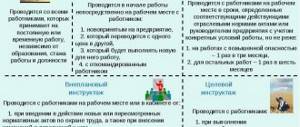If you want to learn everything about how work at height should be organized, you can look through a bunch of sites that contain a lot of useful information, but it is presented, as a rule, in purely legislative language.
Often these are just excerpts from articles, which complicates the understanding for novice occupational safety specialists and just people trying to understand all the intricacies and nuances of how the organization of work at height is structured.
Therefore, in this article I will try to explain in simple and accessible language what working at height is, about the requirements, giving examples from personal experience.
Thanks to this note, you will learn when it is strictly forbidden to carry out this kind of event, and what documents must be drawn up, and I will also attach completed samples of them.
If I don’t succeed, and you still have questions after reading, I invite you to sort them out in the comments. I will be happy to answer, and this communication will be useful not only to you, but also to subsequent readers.
Oh, by the way, don’t forget to read the comments, there we will discuss additional questions not included in the articles 
Rules for working at height. Overview of the requirements of Order 155N
Order of the Ministry of Labor No. 155N came into force back in 2015, but many labor safety specialists still do not understand well the meaning of the laws that have come into force. Please take 10 minutes to watch. In simple words, the video explains the main points of the new Rules and what requirements must be taken into account when working at height.
Please note that working at heights falls within the scope of labor protection. Therefore, they are covered by everything that concerns this issue and safety precautions in general. In addition, there are also internal rules for each industry. In addition, no one is stopping the company from establishing additional requirements by local acts (Order of the director, for example), if they do not contradict current legislation.
Primary requirements
Employers can set local standards, taking into account the specifics of their enterprises. In this case, it is necessary to take as a basis the requirements contained in the new Rules. Work at height can only be carried out by persons over 18 years of age. Specialists entering the enterprise to perform these activities must undergo preliminary and periodic medical examinations. Employees are subject to certain qualification requirements. It must be appropriate to the nature of the work. The qualification level is confirmed by a document on professional education.
Definition of work at height
An important change in the new Rules is the abolition of the distinction between the concepts of “spinner work” and “work at height”. In the new Order they are designated “Work at height” and the same requirements are applied to them.
Current legislation defines exactly what work can be considered work at height. We are talking about the following:
- height is more than 1.8 meters;
- the height is less than 1.8 meters, but there is a risk of falling into the water, onto a working mechanism or onto protruding objects;
- the task is supposed to be performed at a distance of less than 2 m from the drop without a fence or the fence is less than 1.1 m;
- The employee will be required to climb or descend stairs longer than 5 m at an angle of 75 degrees.
In some cases, the rules prohibit working at height, even with insurance. In particular, this cannot be done in case of heavy icing of all structures, in winds that reach more than 15 m/s or more than 10 m/s with high windage rates. Work is also prohibited during thunderstorms or fog, which greatly impairs visibility.
What kind of work is considered work at height?
Security groups
The rules for working at height establish that workers must have clearances to perform the relevant tasks. To directly perform various tasks at height, workers must have 1 or 2 safety groups. Within the framework of current legislation, 3 height groups are considered. Each of them has its own specifics:
- The first height group is direct workers who cannot independently move around the site or use PPE. That is, they must perform the relevant tasks strictly under control.
- The second group in height includes foremen, foremen, and responsible persons involved in management directly on site. We are usually talking about experienced employees using self-insurance.
- The third group in height are managers who issue permits. They are the ones who manage rescue operations and approve plans for performing various tasks at height. This also includes specialists who monitor the mastery of the rules for working at height by representatives of groups 1 and 2.
Work at Height Safety Teams
Internship
It is carried out to consolidate the acquired knowledge and master in practice the provisions that contain the Intersectoral Rules. Work at height as part of the internship is carried out for at least two days. The head of practical training is appointed from among foremen, foremen, qualified specialists with at least a year of experience. No more than two employees are allowed to be assigned to one responsible person. Testing of acquired knowledge is carried out at least once a year. For this purpose, the employer forms an appropriate commission.
Training to work at height
Assignment to a height group occurs after completing training in the course “Safe methods and techniques for performing work at height.” Then you pass an exam and confirm your successful mastery of practical skills. At the end, everyone is issued a certificate confirming that they have the appropriate group.
Groups 1 and 2 according to the rules of working at height must undergo training every 3 years, and group 3 - every 5 years . Performing tasks at height without such training means serious problems for the employer.
Training in safe working practices at height
Having a certificate is not enough: your employees must undergo appropriate training and internship and gain real knowledge. And in relation to workers of groups 1 and 2, we are talking not only about theory, but also about practical knowledge. Upon completion of training, they take an exam that confirms that they have the appropriate skills. And only after this can a certificate be issued.
According to the new rules, every specialist must undergo periodic knowledge testing.
Safety rules for working at height
They are also prohibited in cases where personal protective equipment (abbreviated as PPE) is missing or severely damaged.
The employer is obliged to issue the latter, and at his own expense. The beginning of all work at height involves inspection of personal protective equipment. Distance learning on safe working practices at height
When is a personal record book for high-altitude work issued?
A personal book is issued to persons working without the use of building structures, as well as to workers who operate rope access structures. Specialists need to provide the following documents:
- For activities involving the use of building structures - a certificate of admission to work at heights. Issued on the basis of Appendix No. 2 to Order No. 155n.
- When working without the use of building structures - an admission certificate. Provided on the basis of Appendix No. 4 of Order No. 155n.
Employees who successfully pass the knowledge test receive an appropriate certificate.
PPE against falls from height
One of the main requirements of Order 155N is the ban on the use of installation and construction belts during high-rise work with the possibility of falling. Statistics have shown that people who fall in such a belt, of course, remain alive, but at the same time they receive serious injuries that affect not only their ability to work, but also their future lives.
It is important to know:
Mounting and construction belts in safety systems are prohibited!
paragraph 104 of the Rules:
And the same subparagraph states that a safety harness is used as a harness in safety systems. Unlike a belt, the load when falling in a harness is distributed evenly, and the person is not injured, and, what is important, is in an upright position.
personal protective equipment against falls from a height is now into:
- Restraints , which are used to prevent a person from entering the risk zone;
- Safety - for a safe stop in case of a fall;
- For working positioning , both standing and sitting. Such PPE serves to secure a person in a working position when performing work at height.
The composition of the safety system for working at heights in accordance with Order 155n:
- anchor device
- leashes
- connecting and shock-absorbing subsystem: slings, ropes, carabiners, shock absorbers, retractable-type protection, slider-type fall protection on a flexible or rigid anchor line.
PPE marking
The procedure for using PPE against falls from a height has undergone significant changes. Now all personal protective equipment must be certified for compliance with the standards of the Technical Regulations of the Customs Union “On the safety of personal protective equipment.”
Each product, according to the new rules, must have special markings. The marking provides detailed information about the product. It should contain:
- manufacturer
- Name
- vendor code
- product certification
- date of manufacture,
- number
- basic conditions of use.
The main requirement for marking is that it be indelible, irremovable, and in no way separable from the product.
It is important to know!
The use of protective equipment for which there is no technical documentation - instructions and markings is PROHIBITED!
Read more about the marking of protective equipment in the article.
PPE check
A new procedure for periodic inspections and service life of protective equipment at height have been determined. Previously, all personal protective equipment with a static load of 400 kilograms had to be tested every six months.
It is important to know:
The new Rules introduce a direct ban on testing PPE
The question arises, how to carry out inspections now?
The regulations state that: “worker protective equipment must be used for its intended purpose in accordance with the requirements set out in the manufacturer’s instructions.”
And that: “worker protective equipment must be properly taken into account and maintained in technically sound condition with the organization of their maintenance and periodic inspections specified in the documentation of the PPE manufacturer.”
So, the Rules send us directly to the manufacturer. Manufacturers state that the main technical document for each fall protection device is the instructions for use, which are necessarily attached to each product. The manufacturer's instructions now indicate:
- The primary rules for using this tool are:
- The period after which periodic inspection must be carried out is
- Principles for conducting periodic inspections
- Shelf life of the product.
Competent person
State standards state that periodic inspections are carried out by a “competent person,” but nevertheless did not indicate who the competent person might be. The new rules define the circle of persons who can inspect fall protection equipment. And these are persons who have the 3rd group for safety of high-altitude work.
It is the workers of group 3 who can carry out periodic checks of personal protective equipment. And what minimum knowledge these workers should have is indicated in “Appendix 1” to the Rules. A competent person carries out an inspection in accordance with the methodology approved by the manufacturer - organoleptic control, i.e. visual and tactile inspection of the product for compliance with the main criteria specified in the technical documentation. Simply put, when a competent person receives the product, he
- looks at the expiration date
- degree of wear,
- visually checks for breaks, cracks, breaks,
- all elements of the product are tactile: metal and textile.
Fall Hazards
The type and location of the anchor device are indicated in the work plan at height or in the work permit, and the hazardous factors caused by the location of the anchor devices, provided for in “Appendix No. 10” to the Rules, must be taken into account.
Fall factor
This is a characteristic of the height of a possible fall of an employee. There are 3 risk levels:
- Fall factor 0 , when the attachment point is above the level of the person's head, the lanyard is extended above the person.
- Drop factor 1 when the attachment point is located at the level of the rear attachment point (D-ring) or slightly higher.
- Fall factor 2 when the attachment point is located below the attachment point at the rear or at foot level.
Factor of lack of headroom.
Headroom is the free space remaining to the underlying surface in the worker’s equilibrium state after stopping the fall. When calculating the headroom, it is necessary to take into account the total length of the sling and connectors, the length of the activated shock absorber and the height of the worker.
Pendulum factor
This is a characteristic of a possible fall of a worker accompanied by a pendulum movement. With a possible “pendulum” factor, it is necessary to take into account the change in the trajectory of the worker’s fall due to the activation of the shock absorber, the headroom and free space along the entire trajectory of the fall.
The pendulum factor also requires consideration when positioning the worker relative to the anchor device.
It should be recalled that if a breakdown does occur, then we have 10 minutes during which it is necessary to save the person. It is therefore vital to include additional anchor devices and anchor lines into the safety system, or those already in use but designed to carry the additional load. As well as means of ascent and descent, depending on the rescue or evacuation plan, and of course backup restraint systems, positioning systems, access systems or safety systems provided for in “Appendix No. 12” to the rules.
Thus, the employer or a competent person authorized by him, before starting work at height, must:
- Conduct a risk assessment at the enterprise independently or with the help of a third party;
- According to the risk assessment, implement optimal means of protection against falls from height;
- follow the instructions on the marking of protective equipment;
- carry out maintenance and periodic inspections of the protective equipment specified in the manufacturer’s operational documentation;
- have a clearly developed plan for the rescue and evacuation of workers.
How to identify dangerous factors and assess the risks of falling in the article.
What PPE to use when working at heights
One of the key safety and health rules is the availability of personal protective equipment (PPE). The employer is obliged to issue them free of charge.
IMPORTANT!
If an employee's personal protective equipment is damaged or completely missing, he should not be allowed to work!
PPE must be certified and have documentation from the manufacturer with operating requirements. It is important that they are compatible with security systems.
Depending on the conditions at height, employees are provided with the following PPE:
- special clothing;
- helmets to protect the head;
- safety glasses, shields, screens from dust, flying particles, bright light or radiation;
- protective gloves, creams and other hand protection products;
- special shoes;
- respiratory protection equipment;
- individual oxygen devices;
- hearing protection equipment;
- protective equipment used in electrical installations;
- life jackets and belts;
- signal vests.
The positioning system supports the worker, preventing falls. Movements in it are limited, but the hands remain free. In case of a fall, a fall arrest system is provided. Rescue and evacuation systems are also used in cases where an employee has a low risk of falling, but cannot leave the workplace for any reason.
IMPORTANT!
The employer must regularly check the functionality of safety systems.
Work permit
Since 2015, safety rules for working at heights have introduced a work permit. It states the following:
- location of the relevant work;
- the time during which various tasks at height will be performed;
- conditions for carrying out such work;
- start and end time;
- brigade composition;
- data of responsible persons.
A work permit is issued for a maximum of 15 calendar days. It can be extended one more time for the same period. During breaks, the document continues to be valid. But if the conditions of the task change, the weather suddenly worsens, that is, it becomes impossible to perform work at height according to the rules, then in this case the work permit is canceled. To continue, you will need to issue a new document.
Work permit for work at height
Important point
It is not allowed to change the existing set of measures established by the order. The transfer of the team of performers to another place is carried out by the manager or other person responsible for the work, if the specialist issuing the permit has instructed this. In this case, the work order must contain a corresponding entry in the “Special instructions” column. During a break in activity or upon completion of work, the crew must be removed from the height. The responsible executor must hand over the order to the authorized manager or the person who issued it. In the absence of the specified employees, the permit should be left in a specially designated area. The completion of the work is certified by the responsible employee with his personal signature on the work order.
Main points of the Rules for working at height
So, we see that the requirements of the new Rules make significant changes to the entire industry as a whole:
- The following concepts are introduced: “Pendulum effect”, “Height margin” and “Fall factor”.
- Fall protection PPE is divided into restraining, safety and positioning.
- A ban has been introduced on the use of mounting and safety belts as a means of protection against falls from a height;
- The division between “work at height” and “student work” is eliminated;
- The procedure for passing periodic checks has been determined, which is indicated in the instructions and determined by the manufacturer;
- Each employee must have an appropriate work-at-height safety group;
- The concept of “Competent Person” is introduced;
- Each fall protection product must be marked; The use of PPE without markings is not permitted.
- Dynamic and static testing of PPE in operating organizations is eliminated;
- New height requirements are being introduced. It “rises” from 1.3 to 1.8 meters.
The latest changes to Order 155N came into force on January 18, 2021 with the publication of Order of the MINISTRY OF LABOR OF THE RUSSIA dated December 20, 2018 No. 826n On amendments to some orders of the Ministry of Labor and Social Protection of the Russian Federation in connection with the adoption of Federal Law dated August 3, 2021 No. 288- Federal Law “On ratification of the Convention on Occupational Safety and Health in Construction (Convention No. 167)”
Violation of the rules for carrying out work at heights
Compliance with safety rules at height
The Labor Inspectorate of the State Labor Inspectorate monitors it very strictly. If there are violations, the State Tax Inspectorate may impose serious penalties on the company. Firstly, according to the Code of Administrative Offenses of the Russian Federation, the employer faces a fine of up to 130 thousand rubles per employee. Secondly, if serious violations are detected, the activities of the enterprise will be suspended until the violations are corrected. Thirdly, if an accident occurs at an enterprise where labor safety requirements were violated, it is likely that a criminal case will be initiated. These unpleasant consequences will primarily threaten the company’s management and its founders. Fourthly, we are talking about the health and life of workers. Being the culprit in the disability, or even worse, the death of an employee, it will be difficult to sleep peacefully.
Remember! Failure to comply with the Rules due to ignorance does not exempt you from liability.
To avoid troubles at the enterprise, it is necessary to carry out a set of measures. Learn what the Comprehensive Work at Height Safety System consists of.








